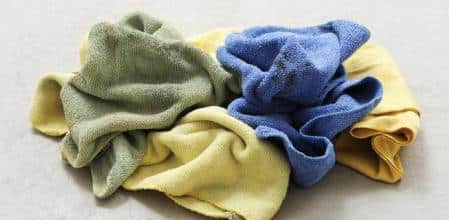
In the kitchen, maintaining proper hygiene is essential for food safety. Lluís Riera, a food technologist and director of SAIA, emphasizes the importance of correctly disinfecting kitchen cloths and scouring pads to prevent them from becoming breeding grounds for harmful microorganisms.
Common Mistakes and Best Practices
- Avoid Soaking for Hours: Leaving cloths and scouring pads to soak for hours can facilitate the growth of microbes, as they thrive in damp environments.
- Boiling and Drying: The recommended method is to boil the cloths and then dry them. This ensures that any microorganisms present are effectively killed.
- Soak in Bleach Solution: Alternatively, soaking the cloths in a cold water solution with bleach for half an hour can disinfect them. Cold water is preferred because hot water can reduce the disinfectant power of bleach.
When to Discard Cloths and Scouring Pads
- Viscous Texture: If a cloth or scouring pad becomes viscous, it should be thrown away immediately. This texture indicates the presence of a biofilm, which is a colony of bacteria that is difficult to eliminate and can be harmful.
Wooden Utensils: A Hidden Risk
Mario Sánchez, another food technologist, advises against using wooden utensils in the kitchen. While they may be traditional and less likely to scratch cookware, they are porous and can absorb food juices, promoting the growth of microorganisms. Additionally, washing wooden utensils in the dishwasher can exacerbate this issue due to the humidity.
Preferred Alternatives
- Stainless Steel and Silicone Utensils: Opting for these materials can help maintain better hygiene in the kitchen, as they do not absorb food juices and are easier to disinfect.
By following these guidelines, you can ensure that your kitchen remains clean and safe, minimizing the risk of foodborne illnesses.

